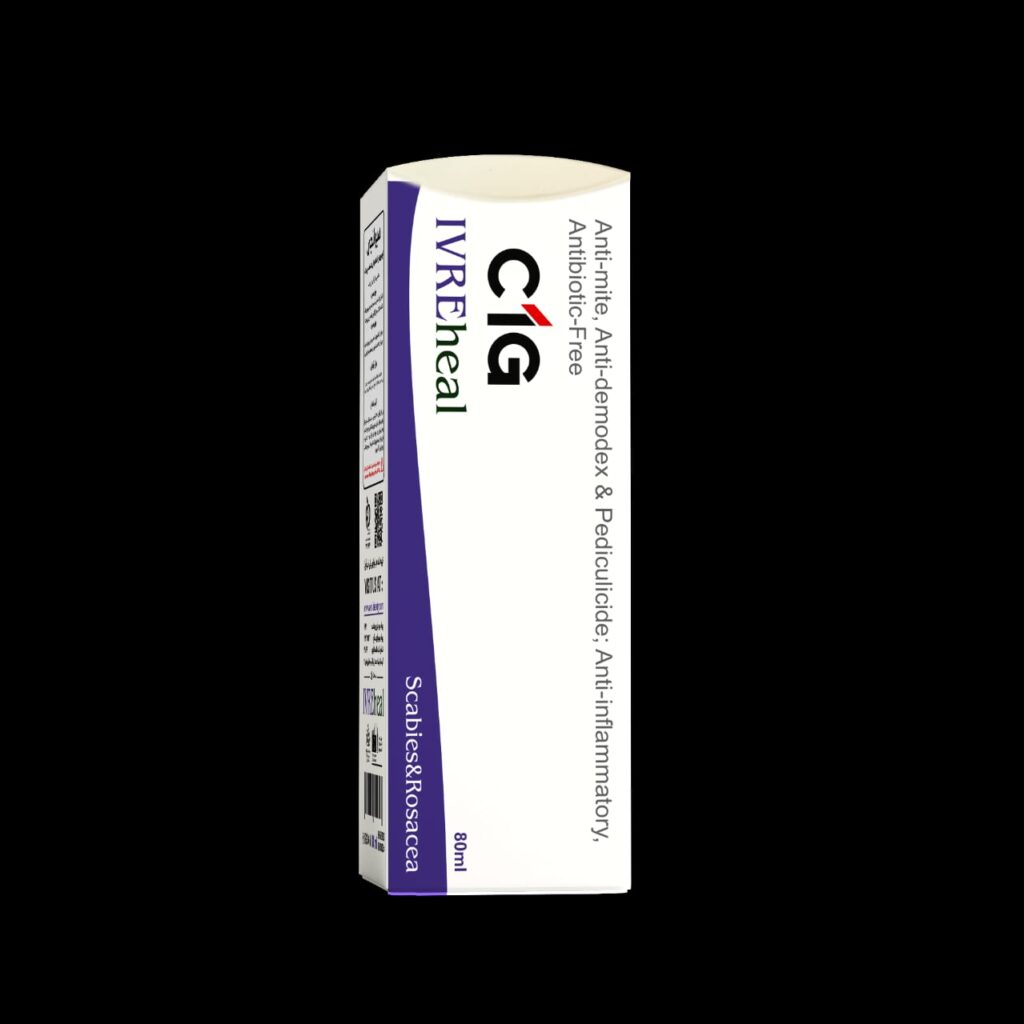IVREheal C1G lotion
What is Scabies (Scabies)?
Scabies is a contagious, itchy, and irritating skin disease caused by a tiny mite called Sarcoptes scabiei. This mite burrows into the surface layer of human skin and lays eggs there, which triggers an allergic reaction in the body, leading to intense itching and skin inflammation. Causative agent: mite (microscopic parasite). Host: humans only (it cannot survive or reproduce on animals). Incubation period: 2 to 6 weeks after the initial infestation, but in subsequent infections, symptoms appear much faster (within a few days). Most common in: crowded places and close-contact environments such as households, dormitories, schools, nursing homes, prisons, and military barracks.
Symptoms usually appear 2 to 6 weeks after the initial infestation and include: intense itching, especially at night; small red bumps or tiny blisters; thin lines on the skin (the path of mite burrowing); scratched wounds caused by severe itching; flaking or secondary infected sores.
Commonly affected areas of the skin include: between the fingers, wrists and elbows, armpits, around the navel and lower back, genital area and buttocks.In infants and children: palms, soles of the feet, face, and scalp.

Treatment for scabies
“Topical ivermectin is an effective and safe alternative to permethrin for treating scabies. It’s particularly useful for patients who have difficulty with compliance or in settings where topical application is challenging.
While not the primary treatment option, topical ivermectin can be a valuable choice, especially in cases where oral ivermectin is not suitable. Elaboration:
Efficacy:
Studies have shown that topical ivermectin (1% cream or lotion) is as effective as topical permethrin (5% cream) for treating uncomplicated scabies. In some cases, topical ivermectin may even be preferred, especially for individuals who have difficulty applying topical medications to the entire body.
Safety:Topical ivermectin is generally considered safe and well-tolerated, with minimal and manageable side effects. This makes it a good option for patients who may have concerns about systemic side effects from oral ivermectin.
When to consider:Refractory scabies: In cases where scabies has not responded to standard topical treatments, topical ivermectin can be a viable option.
Difficulties with topical application: For patients who have difficulty applying medication to their entire body, topical ivermectin can be easier to manage.
Institutional outbreaks: In settings like nursing homes or prisons, where widespread application of topical medications might be challenging, topical ivermectin can be a practical alternative.
Off-label use:While not specifically approved by the FDA for scabies, IVREheal C1G(ivermectin 1% lotion) is approved for rosacea and can be used off-label for scabies.
Comparison to oral ivermectin:While both topical and oral ivermectin can be effective for scabies, topical ivermectin generally has a higher cure rate and faster relief of itching. Oral ivermectin is often recommended for individuals with severe or crusted scabies or for patients who have difficulty with topical application.
Important note:
If you are considering topical ivermectin for scabies, it’s crucial to consult with a healthcare professional to ensure it’s the appropriate treatment option for your specific situation.
Usage Instructions for Scabies:
Apply IVREheal C1G lotion to the entire body except the head and face. Wash it off after 6 to 8 hours, and repeat the application one week later.
Use of C1G IVREheal Lotion in the Treatment of Rosacea
Topical ivermectin is an anti-parasitic and anti-inflammatory medication used to treat papulopustular rosacea (a type of rosacea characterized by red, inflamed bumps and pimples).Mechanism of action of C1G IVREheal lotion in eliminating Demodex mites:
This microscopic parasite, which naturally lives on the skin, is found in greater numbers in patients with rosacea and contributes to inflammation.Reduction of skin inflammation:Ivermectin also has direct anti-inflammatory effects.
How to use C1G IVREheal lotion for rosacea:
- Apply a small amount of C1G IVREheal lotion once daily to clean, dry skin on the affected area (usually the face).
- Avoid contact with the eyes, mouth, and inside of the nose.
- Use regularly for several weeks (typically 8 to 12 weeks) to see noticeable results.